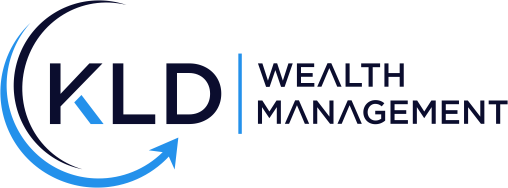Get in touch
Call or Text:
937-404-5180
Email:
dwiedmeyer@kldwealth.com
Double the Impact: How Charitable Remainder Trusts Benefit You and the World
What if I told you that you could receive an income stream for the rest of your life and leave a meaningful legacy behind for the world? No, it’s not some financial magic trick—it’s called a Charitable Remainder Trust (CRT). If you’re like most Millennials and Gen Xers, you probably care about making smart financial decisions while also wanting to leave the world a little better than you found it. The CRT might just be your new best friend.
For many people in our generation, it's not just about making money anymore. We want our financial plans to reflect our values, whether that means supporting environmental causes, promoting education, or addressing social justice issues. That’s where CRTs come in—they let you combine savvy financial planning with meaningful charitable giving. So, how exactly does a CRT work, and how can it benefit both you and the world? Let’s dive in.
What is a Charitable Remainder Trust (CRT)?
Definition and Basics
A Charitable Remainder Trust is essentially a financial win-win. Here’s how it works: you transfer assets (like stocks, real estate, or cash) into a trust, and in return, the trust pays you or designated beneficiaries an income for a set number of years or for life. After that, whatever remains in the trust goes to the charity of your choice.
There are two types of CRTs:
- Charitable Remainder Annuity Trust (CRAT): This gives you fixed annual payments based on the original value of the trust.
- Charitable Remainder Unitrust (CRUT): This provides payments that vary depending on the value of the trust’s assets, which are re-evaluated annually.
Why Millennials and Gen X Should Care
If you’re sitting on appreciated assets, like a home that’s increased in value or a stock portfolio that’s outperformed, a CRT allows you to avoid hefty capital gains taxes when you sell them. Plus, you get to enjoy a steady income stream. Not to mention, you can support a cause that aligns with your values—leaving a legacy that truly reflects who you are.
Benefits to You: Income, Tax Advantages, and Legacy Planning
Income Stream
One of the main perks of a CRT is that it provides you with a consistent income stream. Think of it as a retirement plan that also lets you play philanthropist. You can designate yourself as a beneficiary and use that income for anything—from retirement to travel, or even starting a new venture (hey, why not start that side hustle you’ve been thinking about?).
Tax Benefits
Here’s where the real magic happens. Let’s say you have stock you bought ages ago that’s now worth significantly more. Normally, selling it would result in capital gains taxes that could take a sizable chunk out of your profits. But by placing it in a CRT, you avoid those capital gains taxes and still get a charitable tax deduction based on the remainder that will eventually go to charity.
For those concerned about estate taxes, CRTs can also help reduce your taxable estate. A 2023 report by Giving USA found that charitable donations through trusts like CRTs have been rising steadily, especially among those who are eager to avoid estate taxes and maximize their charitable impact.
Legacy Planning
A CRT allows you to leave a lasting legacy. It’s not just about writing a check to a charity once—you’re creating something that can support causes for generations. Whether it’s supporting a local food bank or contributing to global climate initiatives, a CRT can leave a meaningful mark.
Benefits to the World: Making a Difference
Supporting Causes You Care About
Imagine being able to contribute significantly to a cause that matters to you. One of my clients, a Gen X couple, had always dreamed of supporting wildlife conservation. By setting up a CRT, they were able to donate a portion of their appreciated real estate to a trust. Now, they’re receiving a steady income while knowing that, down the line, those assets will fund conservation efforts.
Amplifying Your Social Impact
Millennials and Gen Xers are more philanthropic than ever. In fact, according to a 2020 study by Fidelity Charitable, 71% of Millennials prioritize purpose over profit, actively seeking ways to align their investments with their values. CRTs offer an excellent avenue for making that happen in a structured, long-term way. You’re not just helping a cause—you’re ensuring its sustainability.
How to Set Up a CRT: Steps and Considerations
Key Decisions
Choosing between a CRAT and a CRUT is one of the first decisions you’ll make. If you want fixed payments, go with a CRAT. If you prefer more flexibility and are okay with payments fluctuating based on your assets, a CRUT might be better.
You’ll also want to consider how long the income payments will last—whether for your lifetime or a set number of years. And, of course, choose a charity that aligns with your personal values.
Working with Financial and Legal Advisors
Setting up a CRT isn’t a DIY project. It’s crucial to work with a financial planner and estate attorney who can tailor the trust to fit your goals. You don’t want to miss out on tax advantages or leave room for errors in the trust’s setup.
How Charitable Remainder Trusts Fit into Personal Financial Planning
Incorporating CRTs into a Broader Financial Plan
A CRT shouldn’t exist in a vacuum. It’s part of a larger financial and estate planning strategy. When combined with other tools, like retirement accounts, life insurance, and living trusts, a CRT can offer even more control over your legacy and financial future.
Avoiding Pitfalls
As with any financial strategy, there are potential pitfalls. Failing to properly manage or update the CRT, for example, could limit its effectiveness. Regular reviews with your financial planner ensure that everything stays on track as your life and financial situation evolve.
Making a Bigger Impact
In the end, a Charitable Remainder Trust offers a powerful way to double your impact—providing financial benefits for you now while leaving a lasting legacy for the causes you care about. Whether you’re passionate about the environment, social justice, or education, a CRT allows you to align your financial goals with your values in a meaningful way.
If you’re ready to explore how a CRT can fit into your financial plan, reach out to a financial planner today. Together, we can create a strategy that not only secures your future but also leaves a lasting impact on the world.





Phone
937-404-5180
706 Deerfield Rd.
Lebanon, OH 45036
Get financial wellness tips, directly to your inbox.
Contact Us
We will get back to you as soon as possible.
Please try again later.
All Rights Reserved | KLD Wealth | Privacy Policy | Form ADV
Advisory services offered through KLD Wealth Management, LLC, an investment adviser registered with the state(s) of Ohio. Advisory services are only offered to clients or prospective clients where KLD Wealth Management, LLC and its representatives are properly registered or exempt from registration.
The information on this site is not intended as tax, accounting or legal advice, nor is it an offer or solicitation to buy or sell, or as an endorsement of any company, security, fund, or other offering. Information provided should not be solely relied upon for decision making. Please consult your legal, tax, or accounting professional regarding your specific situation. Investments involve risk and have the potential for complete loss. It should not be assumed that any recommendations made will necessarily be profitable.
The information on this site is provided “AS IS” and without warranties either express or implied and the information may not be free from error. Your use of the information provided is at your sole risk.
